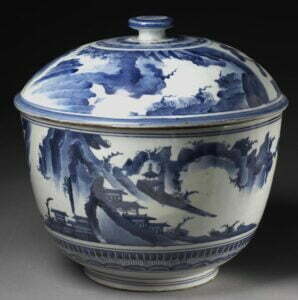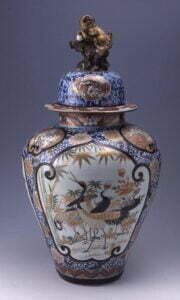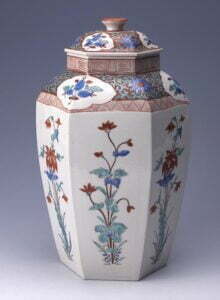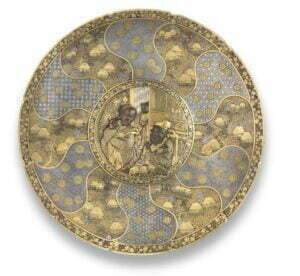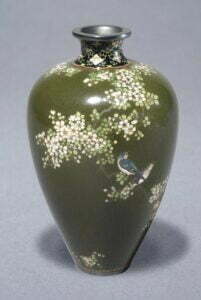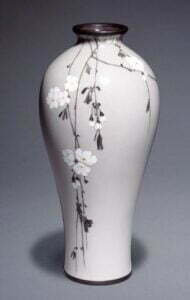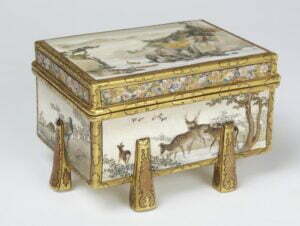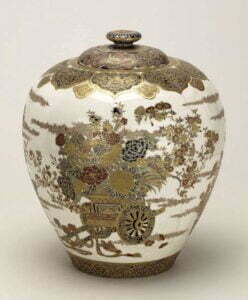Japanese Export Ceramics and Works of Art
Japanese porcelain was first exported to Europe in the 17th century and was produced at the kilns at Arita in Hizen province. The kilns at Arita produced blue and white wares (Fig J1), enamelled ‘Imari’ wares (Fig J2), so named due to being shipped from the port of Imari and the colourful Kakiemon wares (Fig J3). These were incredibly popular when they first made their appearance in Europe in the latter part of the 17th century.
With the end of era of isolation of the Edo Period (1603-1868), Japan went through a great period of political and social change as it opened up to Western influence. The great era of the Western industrial exhibitions was to have a profound influence on the production of goods in Japan for these export markets. With the outlawing of carrying swords with the end of the era of the samurai, the highly skilled craftsmen who had made them, turned their skills to producing beautifully fashioned art objects This can be seen in the beautifully inlaid bronze figures, animals and decorative vessels (Figs J4 and J5).
Photograph © Victoria and Albert Museum.
Photograph © British Museum.
Photograph © British Museum.
With the influence of European artists and craftsmen, the art cloisonné developed and the early designs mimicked Chinese examples. Japanese inspired designs soon followed and two particularly skilled cloisonné makers were Namikawa Yasayuki and Namikawa Sosuke (Figs J6 and J7). The works of the former are usually of highly detailed depictions of birds and butterflies amongst flowers and foliage often on highly polished dark grounds. Namikawa Sosuke’s designs are technically unique compared to other cloisonné makers in that he employed a wireless technique. This lent the works a more painterly appearance where colours and forms seem to transition seamlessly into each other. The quality of the best examples of these works is particularly fine and many are signed on the base.
Photograph © Victoria and Albert Museum.
Photograph © Bonhams.
Photograph © Victoria and Albert Museum.
The export market was also to influence ceramic production and the highly gilded and ornately decorated wares of the Satsuma was far more akin to a Western, rather than a more subdued Japanese aesthetic. The origin of these wares was from Satsuma province in southern Kyushu island, but following their popularity at the Paris 1867 Universal Exposition, the ware became known by a generic style rather than a specific location, but many of the finest wares were produced at kilns in and around Kyoto. The highest quality wares were signed by makers such as Yabu Meizan, Kinkozan, Kozan, Seikozan, Ryozan (Figs J8 and J9).
Photograph © Victoria and Albert Museum.
Photograph © Victoria and Albert Museum.
Photograph © British Museum.
